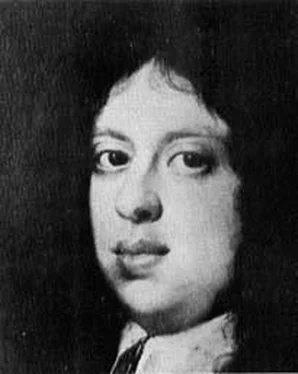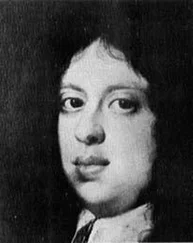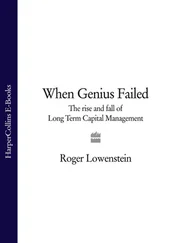So Giovanni reluctantly accepted office as one of the Priori in the Signoria in 1402, in 1408 and again in 1411; and in 1421, for the statutory two-month period, he occupied the office of Gonfabniere . For the rest he appeared content to sit in the shadows of his counting-house, contributing generously to public funds and private charities, investing in land in the surrounding countryside, adopting no more definite a political stance than one of moderate opposition to the civic aspirations of the dispossessed Grandi – whose banker he was nevertheless happy to be – and allowing the rich Albizzi family to exercise control of the government through their friends and nominees in the Signoria .
It had to be agreed even by their political opponents that this period of rule by the Albizzi and their associates had not so far been particularly unpopular in Florence, coinciding as it did with a time of relative prosperity. It had been a harsh rule to be sure: opposition to it had been rigorously crushed; malcontents and rivals had been arrested, banished, impoverished, even executed. But Florentine territories had gradually and continually expanded. Before the Albizzi came to power these territories already stretched far beyond the walls of the city and included the towns of Pistoia, Volterra, and Prato which was bought from the Queen of Naples in 1351. But since they had successfully taken over the government, the Albizzi had not only gained possession of Arezzo; they had also opened up a passage to the sea by capturing Pisa and its port, Porto Pisano, in 1406, and in 1421 they had bought Leghorn from the Genoese.
The acquisition of these ports – celebrated at Pisa by the launching of the first Florentine armed galley – immensely increased the wealth of the Republic, and gave a new impetus to the trade in wool and cloth upon which its prosperity had long depended. From England and the Low Countries, as well as from the hills and valleys of Tuscany, vast quantities of wool had for generations come into Florence to be refined, dyed and re-exported. Before the Black Death the industry was believed to have supported as many as 30,000 people. This explained the importance and influence of the Arte di Calimak and the Arte della Lana , the cloth and wool trade guilds, which for so long had played an essential part in the government of the city and had been responsible for the construction of so many of its finest buildings. The building of the Cathedral of Santa Maria del Fiore, for instance, had been entrusted to officials of the Arte della Lana whose emblem of a lamb was a notable feature on its walls.
The owner of two wool workshops in Florence, Giovanni di Bicci de’ Medici was a member of the Arte della Lana ; but, since his main interest was banking, he was also a member of the Arte del Cambio , a guild whose prestige had been increasing ever since 1252 when the bankers of the city had issued a beautiful small gold coin, stamped on its reverse side with the city’s Latin name, Florentia, and on the obverse with its emblem, the lily. 5This was the famous Jiorino d’oro which became internationally known as the flower, the florence or the florin. It contained fifty-four grains of fine gold, and in terms of purchasing power the florin of the 1430s might be considered the equivalent of about £ 20 today: certainly a man could live very comfortably indeed on an annual income of 150 florins; a small house and garden in the city could be rented for about thirty-five florins a year; a handsome palazzo could be bought for a thousand; a maidservant would cost him no more than ten florins a year and a slave could be bought for fifty. The florin had rapidly gained universal confidence and was soon in common use throughout Europe, to the great credit of the city of its origin and to the banking houses which conducted business there. In 1422 there were two million golden florins in circulation and seventy-two bankers and bill-brokers in the neighbourhood of the Mercato Vecchio. One of the most prosperous and certainly the most rapidly expanding of these businesses was that of the Medici.
An office in Rome had been established in the previous century by Giovanni’s distant cousin, Vieri di Cambio de’ Medici; there were also branches in Venice and Genoa, Naples and Gaeta. Giovanni de’ Medici, who had begun his career as an apprentice to his cousin Vieri, opened a new branch in Geneva, a second branch in Rome, and, as a consequence of the growth in trade following the conquest of Pisa, established correspondents in Bruges and London. But Giovanni’s success as a banker was not so much due to the prosperity of the Florentine wool trade as to his friendship with the Pope.
It seemed a most improbable friendship, for Baldassare Cossa, who was elected Pope in 1410, was not at all the sort of man with whom a rather staid and provident banker might be expected to associate. Sensual, adventurous, unscrupulous and highly superstitious, Baldassare Cossa came of an old Neapolitan family and had once been a pirate. When he decided to enter the Church it appeared to those who knew him best that he sought further adventure rather than the service of God. Adventures he certainly had.
The Church at this time was in a deplorable condition with a pope at Avignon contesting the rival claims of a pope at Rome. In an attempt to end this ‘great schism’, which was dividing Europe into rival camps, a Council had met at Pisa in 1409. The Council’s solution had been to depose both the Avignon pope, Benedict XIII, and the Italian pope, Gregory XII, and to elect a new pope, Alexander V, who promptly adjourned the Council. Since neither of the previous rivals was prepared to accept the verdict of the Council there were now three popes instead of two, a situation which was not improved when Alexander V died and Baldassare Cossa succeeded him, choosing the title of Pope John XXIII. In a fresh attempt to resolve the difficulty, the German Emperor Sigismund summoned a new Council at Constance, and towards the end of 1414 Pope John left for Constance, apparently taking with him a representative of the Medici bank as his financial adviser.
By this time the Medici were well established as the Pope’s bankers. Other Florentine banking houses, notably the Alberti, the Ricci and the Spini, had acted as financial agents for the Curia in the past; and the amount of business which the Medici had conducted at Rome was relatively small, though Giovanni had much increased its volume while he was working there between 1386 and 1397. During the pontificate of John XXIII, however, it was the Medici who were most closely associated with the affairs of the Curia. It was said that they had helped to secure this position for themselves by providing the Pope with the money – 10,000 ducats – with which he had purchased his cardinal’s hat; certainly, while he had been Cardinal Legate at Bologna from 1403 until 1410 he had constantly been in correspondence with Giovanni, with whom he had conducted a great deal of business and to whom he referred as ‘my very dear friend’.
After Cardinal Cossa’s election as Pope the Medici had begun to enjoy an exceptionally profitable relationship with the Papal Chamber, by which the Curia’s revenues were collected and disbursed. They had also been the principal backers of John XXIII during his war with King Ladislaus of Naples who supported the claims of Gregory XII one of the two rival popes; and when Pope John made peace with King Ladislaus in June 1412 it was again the Medici who played the main part in finding the 95,000 florins which were to be paid to the King of Naples under the terms of the treaty. Two valuable mitres, as well as a quantity of papal plate, were handed over to one of the Rome branches of the Medici bank as a pledge. This sort of transaction was not to Giovanni’s taste; but it was a small and necessary price to pay for the enormous profits to be made from the handling of papal finances. How truly immense these profits were may be judged from the fact that over half the astonishing profits of the Medici bank now came from the two Rome branches.
Читать дальше












